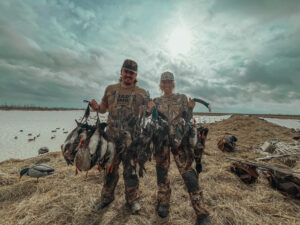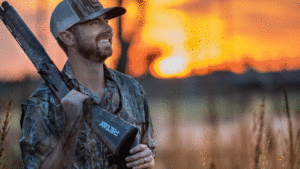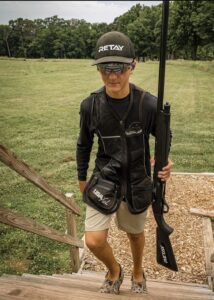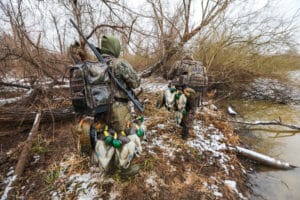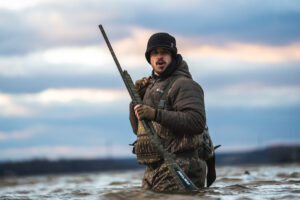
Part 2
Hunting Techniques and Strategies
Early Hunt Strategies
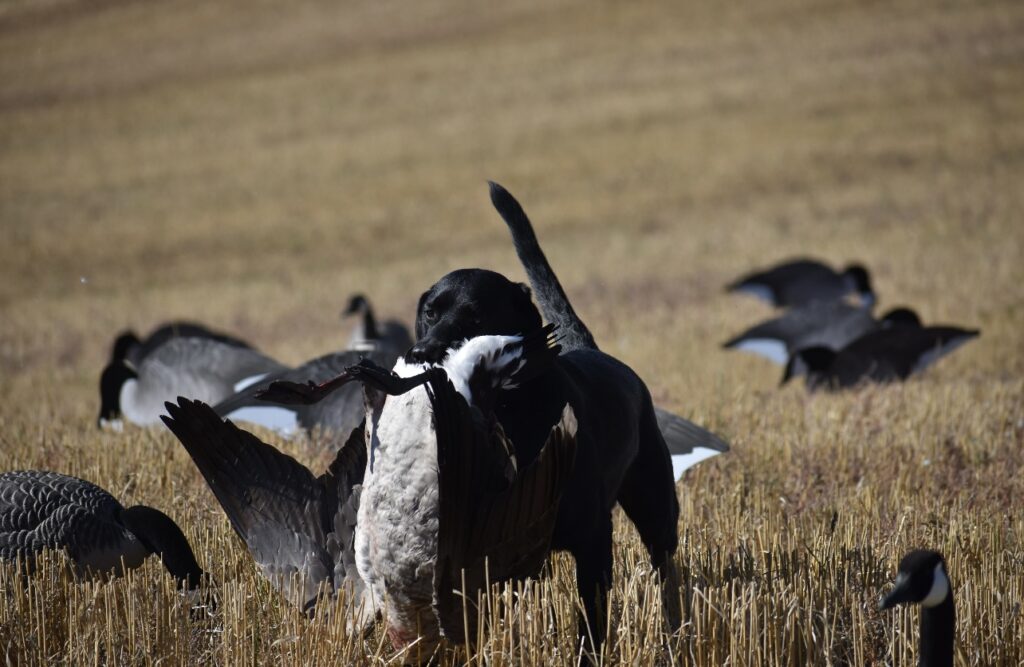
Early season goose hunting can be challenging, but there are some strategies that can help hunters increase their chances of success. One of the most important things to keep in mind is to scout the area ahead of time. This will help hunters identify where the geese are feeding and roosting, which will make it easier to set up in the right spot.
Another strategy is to hunt in the morning, when the geese are flying from their roosting areas to their feeding areas. This is when they are most active and likely to respond to calls. It’s important to use decoys and calls that mimic the sounds and movements of geese, as this will help attract them to the hunting area.
One of the first considerations for a successful early hunt is understanding the local geese’s behavior. Canada geese follow specific patterns throughout the day – they usually leave their roosting areas at sunrise to find food, and they return to their roosting spots near dusk. To catch them in transition, understanding their routines and pinpointing their high-traffic flight paths will give you an advantage. You can accomplish this by observing their behavior a few days before your planned hunt.
Weather conditions greatly impact the behavior of Canada geese. Warm, calm days might make the birds less eager to move, while colder, windier days can increase their activity, making them more susceptible to your decoys and calls. Always consider weather forecasts when planning your hunt, and be ready to adapt based on the conditions.
The importance of effective camouflage cannot be overstated in early goose hunting. Canada geese have exceptional eyesight and can easily spot anything out of place. Be sure to match your camouflage with the surrounding environment, taking into consideration the specific seasonal changes in vegetation. This includes your hunting blind, which should be well-hidden and blend seamlessly with the environment.
Your choice of decoys is also crucial in early hunting. Canada geese are social birds, and seeing others seemingly feeding safely will provide them the confidence to land. Early in the season, smaller groups of decoys can be more convincing as geese are not yet gathered into large flocks. Adjust the arrangement of your decoys to match the behavior of the geese you’re scouting. Consider using more feeder decoys to replicate birds comfortably feeding.
The effective use of calls is another vital strategy. Canada geese use a variety of vocal communications, and matching their calls can significantly increase your chances of a successful hunt. Remember that less is often more in terms of calling. Overcalling can arouse suspicion and scare the geese away. Pay close attention to the response of the geese to your calling and adjust accordingly.
A unique aspect of early Canada goose hunting is dealing with resident birds versus migrants. Resident geese are more accustomed to local conditions, making them more challenging to hunt as they may have become wary due to repeated exposure to hunting tactics. On the other hand, migrant geese, not as familiar with the area, might be easier to trick with decoys and calls. Being able to distinguish between the two can help tailor your strategy.
Lastly, remember that hunting pressure can drastically alter the behavior of geese. If other hunters are also active in the area, the geese may become more wary and change their feeding, roosting, and flight habits. Always be ready to adjust your strategy based on these changes. This could mean moving to a new location, changing the setup of your decoys, or modifying your calling strategy.
Field Hunting Tips
Field hunting for geese can be an immensely rewarding endeavor, demanding both strategic preparation and in-the-field adaptability. Early in the season, it is especially important to familiarize oneself with the feeding patterns and preferences of the local geese. Their choice of field often depends on the crop type, so monitoring which fields they favor can provide valuable insight for your hunting location selection. Corn, wheat, and barley fields are often a magnet for geese as they provide ample food resources.
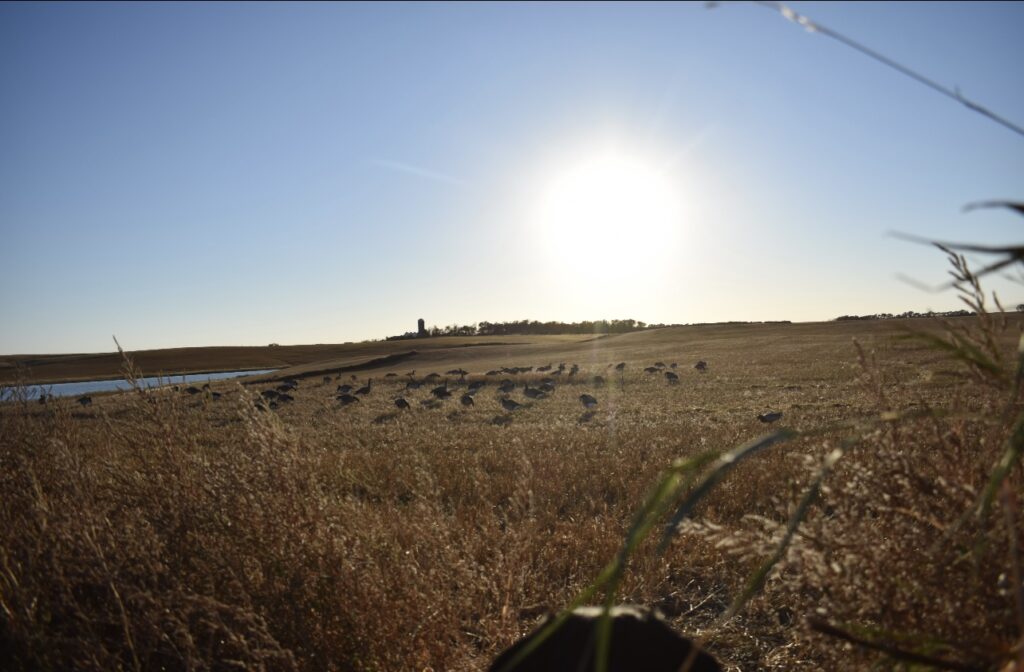
Acquiring permission to hunt on private lands can often enhance the success of your hunt. It’s critical to approach this with sensitivity and respect, as these farmers own the fields that are crucial to your hunting endeavor. Be courteous, responsible, and show willingness to follow all their guidelines. Sometimes, offering to share part of your hunting spoils or assist with any farm chores can go a long way in securing a long-term hunting agreement.
In field hunting, the use of decoys can make or break your hunting success. The decoy spread should imitate the natural behavior of geese as closely as possible. Observe how the geese arrange themselves in the field – typically, they may set up in family groups. Early in the season, when large flocks are less common, a spread of 12 to 20 decoys might be adequate. A mix of feeding and resting decoys can provide a more realistic portrayal of a relaxed, feeding flock, which can effectively lure in passing geese.
The position of your decoys should factor in wind direction. Geese prefer to land into the wind, so set your decoys to create an open landing zone where geese can comfortably approach and land into the wind.
Your blind, or hiding spot, must be well camouflaged and unobtrusive. Portable layout blinds are commonly used in field hunting for geese. These blinds should be covered with vegetation from the field you’re hunting in, matching the color and texture of the surrounding area. The goal is to look like a natural part of the landscape so as not to alert the wary geese.
Goose calls are another essential tool in your hunting arsenal. While many types of calls exist, the feeding call is particularly effective when field hunting. This call simulates the contented chatter of feeding geese and suggests to others that your decoy spread is a safe and plentiful feeding area. Be observant of the reactions of the geese to your calls, as overcalling can make them suspicious.
Another crucial aspect of field hunting is movement. Realistic movement in your decoy spread can make a significant difference. Decoys equipped with motion stakes that mimic feeding movements, or flagging, can add the illusion of life to your setup.
To conclude, successful field hunting for geese in the early season involves diligent scouting, securing permissions, strategic setup of decoys, effective concealment, mastery of calls, and simulating realistic movement. By adopting these strategies, you will significantly enhance your chances of a successful harvest in the field.
Hunting on Water
Water hunting, specifically on lakes, ponds, or rivers, presents its own unique opportunities and challenges for the goose hunter. When geese utilize these water bodies as their feeding grounds or for rest during their migratory journey, water hunting can prove to be highly productive.
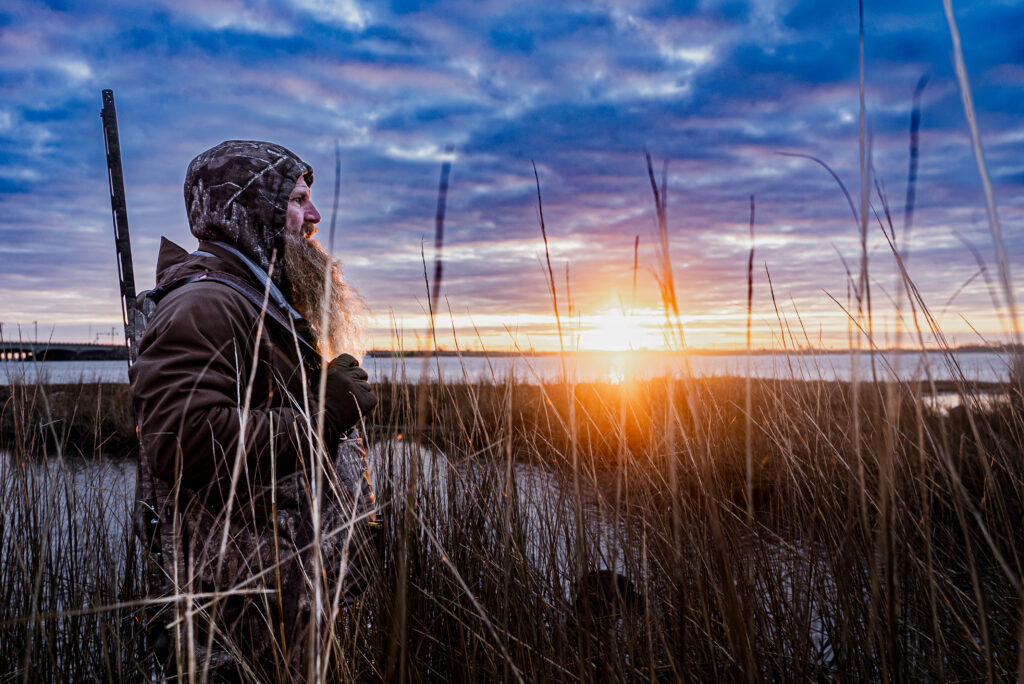
First and foremost, scouting is paramount to identify where the geese prefer to rest or feed. Spend time observing their patterns and preferences. Geese often return to the same water bodies regularly, providing an excellent opportunity for hunters. Look for areas with easy access to nearby fields for feeding and safe, open water for resting.
When choosing a hunting spot, consider the geese’s approach and exit routes. Geese prefer to land into the wind, so account for the wind direction while setting up your spot. Choosing a site with a clear line of sight will also enable you to spot incoming birds earlier, giving you more time to prepare for the shot.
In terms of decoys, goose floaters are the go-to choice for water hunting. These are designed to mimic the look and motion of geese on the water. Set up your floaters to resemble natural flock formations. One popular setup is the ‘U’ or ‘J’ formation, where the opening acts as a landing zone for incoming geese. Also, consider using a jerk cord system for adding motion to your decoys, simulating the natural movement of feeding or preening geese on the water.
Goose calls are crucial in convincing the geese that your decoy spread is a safe place to land. There are specific calls that mimic geese on the water, such as murmurs and feeding calls. Remember, the goal is to sound natural and relaxed, so avoid over-calling.
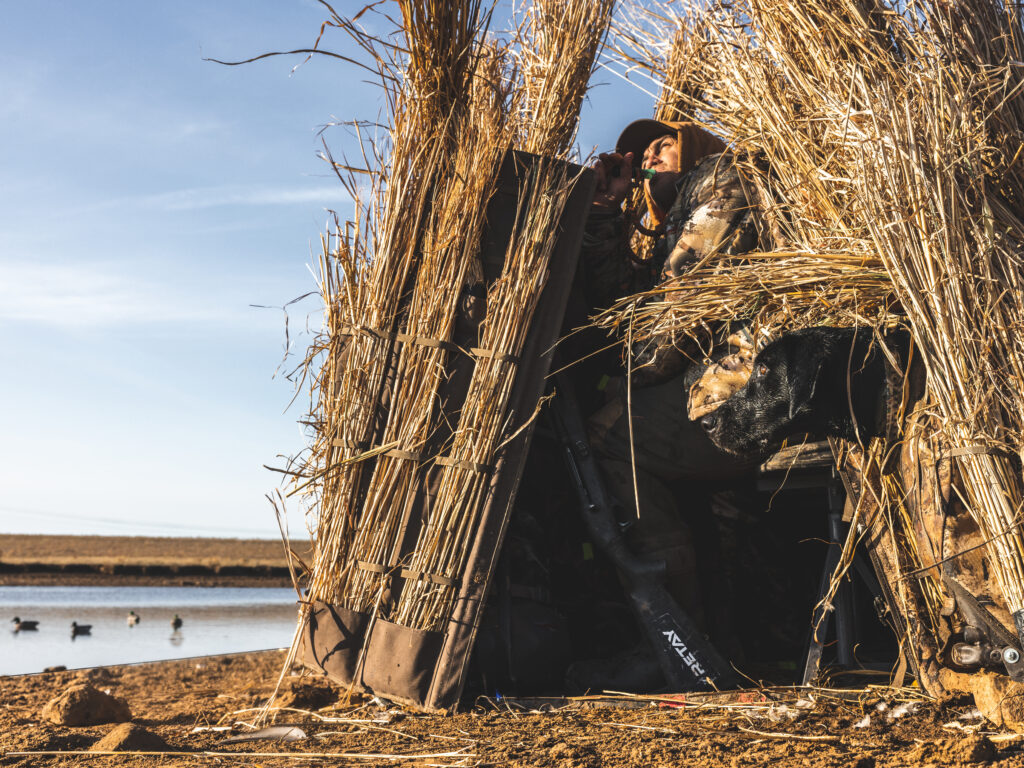
Your concealment on the water is equally important. Layout boats or floating blinds can be very effective for water hunting. These should be camouflaged to match the surrounding vegetation. If such options are unavailable, using natural cover like tall grass, reeds, or cattails along the water’s edge can also work. However, always ensure that your hiding spot provides a good vantage point for observing incoming geese and a clear shooting lane.
Flagging Techniques
Flagging is a technique that can be used to attract geese to the hunting area. Hunters use a flag to mimic the movement of a goose’s wings, which can help draw them in. It’s important to use the flag sparingly and in conjunction with decoys and calls.
When flagging, hunters should try to mimic the movement of geese that are in the area. This can help make the decoys and calls more effective. It’s also important to be aware of any regulations or restrictions on flagging, as these can vary depending on the location.
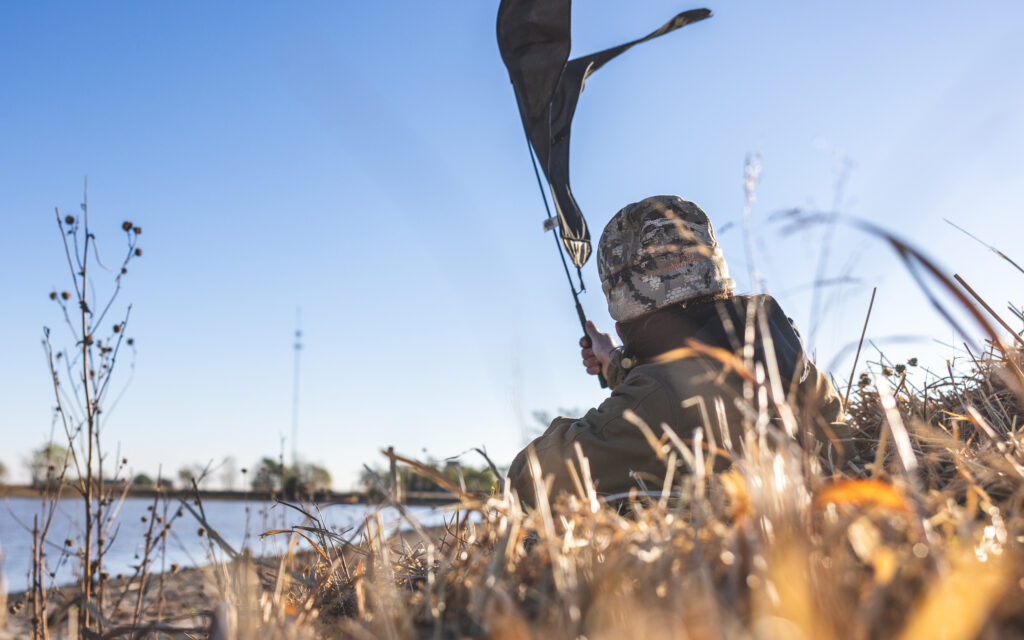
Overall, early season goose hunting requires careful planning and preparation. By using the right techniques and strategies, hunters can increase their chances of success and have a more enjoyable hunting experience.
Conclusion
In conclusion, the key to a successful September goose hunting season is preparation. By following the Ultimate Pre-Season Checklist for September Goose Hunting, hunters can ensure they have all the necessary gear and equipment to maximize their chances of success.
